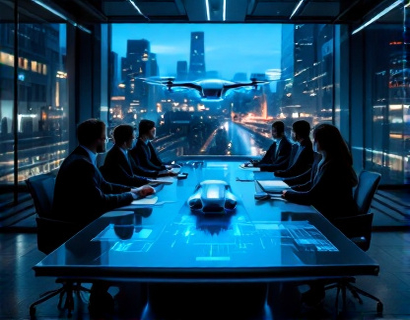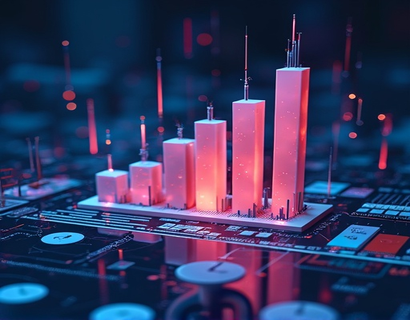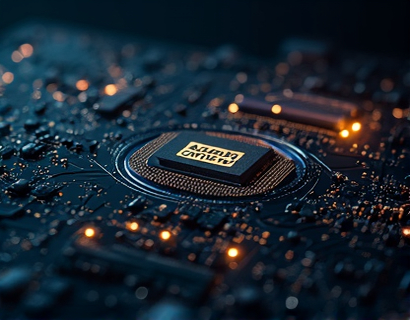Aerospace Tech Advancements: Driving Efficiency and Safety in Aviation and Space Exploration
The aerospace industry stands at the forefront of technological innovation, continuously pushing the boundaries of what is possible in both aviation and space exploration. Recent advancements have significantly enhanced efficiency and safety, paving the way for a new era of exploration and commercialization. This article delves into the latest technological breakthroughs that are reshaping the aerospace landscape, offering industry professionals and visionaries a comprehensive look at the future of aerospace engineering.
One of the most significant advancements in aerospace technology is the development of more efficient propulsion systems. Traditional jet engines have been improved through the integration of advanced materials and aerodynamic designs, leading to reduced fuel consumption and lower emissions. For instance, the use of composite materials in engine components has not only lightened the weight but also increased durability and resistance to high temperatures. These improvements translate directly into better fuel efficiency, which is crucial for both commercial airlines and space missions where every kilogram counts.
Another critical area of innovation is in the realm of electric and hybrid propulsion systems. Electric propulsion offers a promising alternative to traditional jet fuel, providing quieter, cleaner, and more efficient flight. For short to medium-range flights, electric aircraft are becoming a viable option, with several prototypes already in development. These aircraft utilize advanced battery technologies and power electronics to achieve higher efficiency and lower operational costs. In space exploration, electric propulsion systems are being used for satellite maneuvers and deep-space missions, offering a more sustainable and cost-effective solution compared to chemical rockets.
Aviation safety has also seen remarkable improvements thanks to advanced avionics and automation systems. Modern aircraft are equipped with sophisticated flight management systems that enhance pilot situational awareness and reduce the likelihood of human error. These systems integrate data from various sensors and navigation sources to provide real-time information and automated control functions. For example, autopilot systems can maintain optimal flight paths, adjust for turbulence, and even handle emergency situations with minimal pilot intervention. This not only improves safety but also reduces pilot fatigue, a significant factor in aviation accidents.
In the realm of space exploration, autonomous systems are playing an increasingly vital role. Spacecraft equipped with advanced AI and machine learning algorithms can perform complex tasks with minimal human oversight. These systems enable spacecraft to navigate through unknown environments, avoid obstacles, and conduct scientific experiments with high precision. The Mars rovers, for instance, rely on autonomous navigation to traverse the Martian terrain, collecting valuable data and sending it back to Earth. Such capabilities are essential for future manned missions to the Moon and Mars, where real-time communication with Earth is not feasible due to the vast distances involved.
Material science has also seen significant advancements, contributing to the overall efficiency and safety of aerospace vehicles. The development of lightweight yet strong materials, such as carbon fiber composites and advanced alloys, has revolutionized aircraft and spacecraft design. These materials offer superior strength-to-weight ratios, allowing for the construction of lighter and more fuel-efficient vehicles. Additionally, the use of nanomaterials and smart materials that can adapt to changing conditions is opening new possibilities for adaptive structures and self-healing surfaces, further enhancing the performance and durability of aerospace systems.
Another area of focus is in the development of more efficient aerodynamic designs. Computational fluid dynamics (CFD) and wind tunnel testing have been enhanced by advanced simulation tools and machine learning algorithms. These tools enable engineers to optimize aircraft and spacecraft shapes for minimal drag and maximum lift, leading to significant fuel savings and improved performance. For example, the use of boundary layer control techniques, such as micro-vortex generators, can reduce drag by smoothing the airflow over the surface of the vehicle, resulting in more efficient flight.
In the context of space exploration, reusable rockets have become a game-changer, drastically reducing the cost of access to space. Companies like SpaceX have pioneered this technology, developing rockets that can land vertically and be reused multiple times. This not only lowers the cost per launch but also increases the frequency of missions. The use of advanced materials and thermal protection systems ensures that these rockets can withstand the extreme conditions of re-entry, maintaining their structural integrity and performance. Reusability is a key factor in making space travel more sustainable and accessible.
Communication technologies have also seen significant advancements, enabling better connectivity and data transmission in both aviation and space. Satellite communication systems have been upgraded with higher bandwidth and more reliable links, facilitating real-time communication between aircraft and ground control, as well as between spacecraft and Earth-based stations. This is crucial for mission control, emergency responses, and the transmission of scientific data. Additionally, the development of laser-based communication systems promises even higher data rates and security, further enhancing the capabilities of aerospace vehicles.
Health and wellness technologies are another critical aspect of aerospace advancements, particularly for long-duration space missions. Astronauts face unique health challenges due to the microgravity environment, including muscle atrophy, bone density loss, and vision impairment. To address these issues, advanced monitoring systems and personalized health management solutions are being developed. Wearable devices and biosensors can continuously monitor vital signs and physical conditions, providing real-time data to healthcare professionals on Earth. This allows for timely interventions and the development of countermeasures to mitigate the effects of space travel on the human body.
Environmental sustainability is also a key consideration in aerospace technology advancements. The industry is increasingly focused on reducing the environmental impact of aviation, particularly in terms of emissions and noise pollution. Alternative fuels, such as biofuels and hydrogen, are being explored to replace traditional jet fuel. These sustainable alternatives have the potential to significantly reduce carbon emissions and other pollutants. Moreover, electric and hybrid propulsion systems for aircraft are being developed to further minimize environmental impact, especially for shorter flights.
The integration of artificial intelligence and big data analytics is transforming the way aerospace operations are managed. AI algorithms can process vast amounts of data from various sources, including sensors, maintenance records, and weather forecasts, to optimize flight plans, predict maintenance needs, and enhance operational efficiency. Predictive maintenance, powered by machine learning, can identify potential issues before they become critical, reducing downtime and maintenance costs. This data-driven approach not only improves safety but also enhances the overall performance of aerospace systems.
Looking ahead, the future of aerospace technology holds even more exciting possibilities. One area of intense research is the development of hypersonic vehicles, capable of traveling at speeds exceeding Mach 5. These vehicles would revolutionize both commercial air travel and military applications, offering unprecedented speed and capabilities. However, achieving stable and controlled hypersonic flight requires overcoming significant technical challenges, such as managing extreme heat and aerodynamic forces.
Another frontier is the exploration of lunar and Mars colonies. The establishment of permanent human settlements on other celestial bodies will require advanced life support systems, in-situ resource utilization, and robust infrastructure. Technologies for extracting water from lunar soil, generating oxygen, and producing fuel from local resources are being developed to support these ambitious goals. The success of these endeavors will depend on continued innovation and collaboration between governments, private companies, and research institutions.
In conclusion, the aerospace industry is at a pivotal moment, driven by a wave of technological advancements that are enhancing efficiency, safety, and sustainability. From efficient propulsion systems and advanced materials to autonomous technologies and sustainable fuels, the innovations being developed today will shape the future of aviation and space exploration. As the industry continues to push the boundaries of what is possible, the potential for new discoveries and applications remains vast, promising a brighter and more connected world.










































